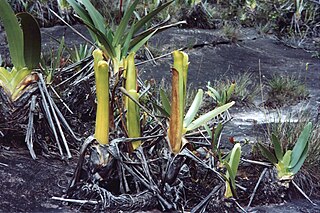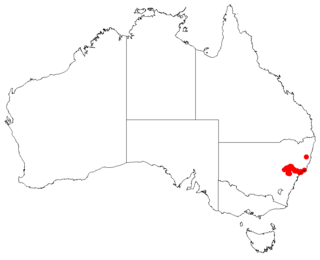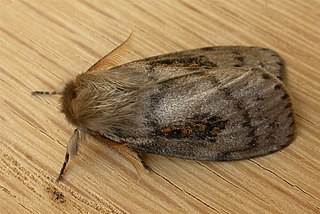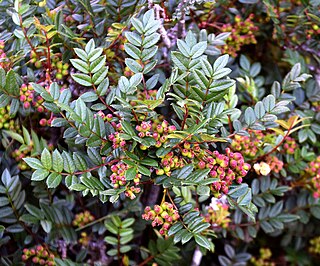Related Research Articles

Brocchinia reducta is one of few carnivorous bromeliads. It is native to southern Venezuela, Brazil, Colombia, and Guyana, and is found in nutrient-poor soil. B. reducta adapts to different environments, when growing on rocks it uses its roots as anchors.

Brocchinia is a genus of the botanical family Bromeliaceae, and is the sole genus of the subfamily Brocchinioideae, containing 20 species. The genus is named for Giovanni Battista Brocchi, Italian naturalist (1772–1826). Brocchinia species are native primarily to the ancient Guayana Shield in southern Venezuela and Guyana, with some species extending into Colombia and northern Brazil. Its species are generally restricted to areas of sand and sandstone of the Roraima Formation; a few occur on granite.

Paepalanthus bromelioides is a species in the flowering plant family Eriocaulaceae. This family is placed in the Poales, close to the Bromeliaceae, whose morphology this genus shares. Paepalanthus bromelioides is native to Cerrado, the area in which the carnivorous bromeliad Brocchinia reducta is also found. There is some speculation that the occasional insects trapped in the urn of this plant are evidence of its being a carnivorous plant.

Manduca is a genus of moths in the family Sphingidae, the hawkmoths. The genus is used as a model in the biological sciences. The tobacco hornworm and the tomato hornworm in particular have been well studied. The genus was erected by Jacob Hübner in 1807.
Thermomesochra reducta is a species of copepod in the family Canthocamptidae, and the only species in the genus Thermomesochra. It is listed as Data Deficient on the IUCN Red List.

Macrozamia reducta is a species of plant in the family Zamiaceae. It is endemic to New South Wales, Australia.

Limenitis reducta, the southern white admiral, is a butterfly of the family Nymphalidae.

Leptocneria reducta, the white cedar moth, is a moth of the subfamily Lymantriinae. The species was first described by Francis Walker in 1855. It is found in all of Australia, except Tasmania.

Sorbus reducta (铺地花楸), the dwarf Chinese mountain ash, is a species of flowering plant in the family Rosaceae, native to western China (South West Sichuan and North West Yunnan}. Growing to 1.5 m tall by 2 m wide, it is a dense deciduous spreading shrub. Each leaf, 10 cm long, has up to 15 leaflets which turn to brilliant shades of red in the autumn. White flowers in spring are followed by red or pink, and then white berries in autumn.
Macaduma reducta is a moth in the subfamily Arctiinae. It was described by Walter Rothschild in 1912. It is found on Fergusson Island in Papua New Guinea.

Pterolophia is a genus of longhorn beetles of the subfamily Lamiinae, containing the following species:
Dichomeris reducta is a moth in the family Gelechiidae. It was described by Anthonie Johannes Theodorus Janse in 1951. It is found in South Africa.
Pterolophia ingrata is a species of beetle in the family Cerambycidae. It was described by Francis Polkinghorne Pascoe in 1864.

Pterolophia melanura is a species of beetle in the family Cerambycidae. It was described by Francis Polkinghorne Pascoe in 1857. It has a wide distribution in Asia.
Pterolophia gibbosipennis is a species of beetle in the family Cerambycidae. It was described by Maurice Pic in 1926.
Pterolophia instabilis is a species of beetle in the family Cerambycidae. It was described by Per Olof Christopher Aurivillius in 1922. It is known from Seychelles.
Pterolophia guineensis is a species of beetle in the family Cerambycidae. It was described by James Thomson in 1864, originally under the genus Alyattes.
Helophora reducta is a species of sheetweb spider in the family Linyphiidae. It is found in the United States.
Locustopsis reducta is an extinct species of grasshopper in the family Locustopsidae, with fossils found in Germany.
References
- ↑ BioLib.cz - Pterolophia reducta. Retrieved 27 February 2018.